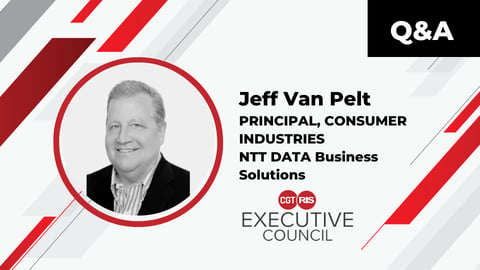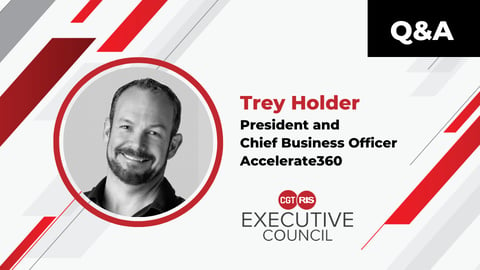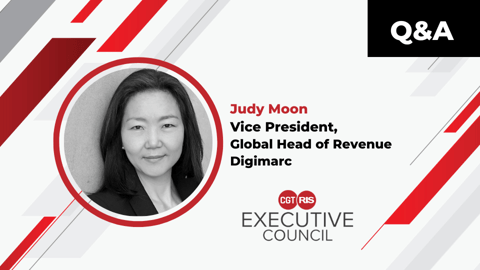Adapting and Excelling: Insights from Tata Consultancy Service’s Saurabh Atri
For someone so passionate about and engaged with the industry, it might come as a surprise that Saurabh Atri initially got involved in retail and consumer goods through a happy accident.
Since making his first foray into the space, Saurabh has worked to become head of North American retail and consumer packaged goods (CPG) go-to-market at Tata Consultancy Services (TCS), a role that places him squarely on the crossroads of technology-led innovations in the retail and consumer goods sector.
Overseeing one of TCS’s fastest-growing verticals means Saurabh is on a mission to help retail and CPGs think big and elevate their businesses to new heights with the help of technology – whether that be artificial intelligence, retail media networks, automated solutions, or sustainability-driving tools. As part of the CGT/RIS Executive Council, Saurabh brings a deep understanding and enthusiasm for retail and consumer goods technology to the table, offering a unique lens through which to navigate the challenges of an industry in constant motion.
Here, we catch up with him about his predictions for the future in retail and CG tech, advice for fellow executives, and how he defines an excellent shopping experience.
EC MEMBER SHARES
How long have you been with TCS?
5 years (no year has been a duplication of the last!)
What’s the best piece of advice you’ve ever received?
Think big.
What are the three things you’d bring if you were stuck on a desert island?
Humidity-powered cocktail maker, karaoke party mixer, and a talking parrot with endless mimicry jokes on Indian movies.
What do you wish you knew how to do?
Singing (without people throwing coins at me)
CGT: Your expertise draws from a number of industries, ranging from sales to fintech to driving digital transformation. What drew you to retail and consumer goods, and how did you get involved in these industries?
By accident! Having professionally ‘grown up‘ in fintech/finance industries where I worked in large-scale digitalization projects to blitzscaling customer acquisition in mobile wallets, my only relation with retail and consumer goods, was as a consumer (and the occasional critique). But that changed when I chose to spend 2 years in Milan for my MBA. Here, I witnessed firsthand how Italians made things beautiful and at scale. That was the spark that got me interested in retail and consumer goods. As luck would have it, my professional journey with Tata Consultancy Services (TCS) allowed me to be at the intersection of technology-led innovations in retail and consumer goods.
CGT: What’s your sense of the industry’s appetite for tech innovation right now?
In today‘s pragmatic times, our customers are asking for technology solutions that not only drive their revenue and improve customer experience but also unlock savings. With retailers and CPGs reimagining business and operating models, the appetite for tech innovation is substantial. Our customers see immense potential in leveraging technology to enhance various aspects of their business – improving operational efficiencies, delivering exceptional customer experiences, and staying competitive.
For example, as retailers look to monetize their physical spaces and digital platforms through Retail Media Networks (RMN), they’re engaging with TCS to optimize 1st party insights with 3rd party data, at scale, to drive better consumer engagement. Retailers will require significant tech investments in a full-fledged RMN tech stack. Retailers are also looking to tackle growing shrinkage and become FSMA compliant.
On the other hand, CPGs are investing in making their ESG and sustainability reporting accurate and automated, giving rise to a demand for data, analytics, and automation solutions. We are also seeing AI-focused investments in areas such as customer service, demand forecasting, revenue management, etc.
CGT: Where do retailers and CGs need the most support?
P&L leaders in retail and brands are looking to turn their business units from a cost center to a profit center, monetize physical/digital assets, and develop productized services to drive net new revenues and increase customer stickiness.
Here‘s the problem — majority of their time is spent managing the run-the-business side, which is of course needed to operate but is hampering their growth initiatives. Add to that – a high number of vendor/partners to manage, complex operating models, and legacy tech stacks.
At TCS, we've had the privilege to help major brands focus on the grow-the-business side, by consolidating a long tail of service providers to sharpen accountability and simplify governance, execute a new operating model and also take out dollars from the run-the-business side and pour cost-savings into new revenue initiatives.
CGT: What are some of the new consumer behavior trends that you think fail to get enough attention? What should retailers have on their radar?
AI-powered in-store recommendations – it’s interesting in the sense that AI-powered recommendations are a thing of the ‘90s in today’s e-commerce space, but coming to think about it, the in-store experience has not kept up with the innovations in digital channels. I feel consumers want to relish the magic of recommendations based on their profiles, life phases, tastes, hobbies, and likes. This is one area I feel doesn’t get enough attention, but has tremendous potential.
When I go to the store to grab wine, there are hundreds if not thousands of wine types to explore. I spend too much time looking around (which is fun too!) at what’s new or on the Vivino app to recommend stuff based on my past wine ratings. I would love to have an AI-based store experience agent to recommend stuff to me in-store. It applies to any experiential commodity (OK, not so much for potatoes, but who knows!)
CGT: How can consumer goods manufacturers improve their retail partnerships in 2023?Gone are the days when collaborations between retailers and brands would mean quarterly business reviews and (dreaded) revenue negotiations in a dark place somewhere in Alaska in rooms without windows. Retailers and brands are in the people business. Consumers are looking to be healthier, happier, and wealthier. With that goal, both parties have to drive purposeful engagement, amp up trust, and craft mutual win-wins. Even if that means something as simple as curating happy hours between the buyers, merchandisers, category managers, sourcing, and tech. In some cases, TCS picks up the role of a master collaborator between retailers and CPGs, since we are common partners on both sides.
CGT: What are some of the emerging technologies that you think will bring about the most change in the next 5-10 years?
I have a contrarian view on this. I have a story to share. I came across this 150+-year-old Swiss shoe brand with a retail presence. Now think about this market for a moment, we are talking shoes – kids, adults, everyday use, functional, stylish. There are hundreds of brands/retailers (some very tech-savvy) to compete against your shoe budget. But to date, I’ve spent more than CHF 2000 ($2,280) on buying shoes from here. Why? When you go into their stores, there is always an “expert” paying attention to your specific needs. They listen and recommend items until you’re satisfied with the purchase. It makes you fall in love with the brand.
The basic human emotion of “love” is global, transcends tech trends, and is the single most understated driver of sustainable profitability. It’s what makes companies last over centuries.
Which technologies can help brands invoke a “chemistry” with their customers? (not an exhaustive list). Also, it’s table-stakes today to talk about Gen AI, and automation, so I have three areas:
1. Social commerce – the evolution of social media platforms into shopping destinations. According to Statista, there are 4.8 billion internet users worldwide and 4.5 billion are on social media platforms. Today this channel makes up to $1.2 billion and is expected to reach nearly $3 trillion by 2026. A typical social media user spends around 2.5 hours per day on their favorite social media platforms. The problem – connecting intent with action. Many platforms are working to build the complete funnel experience and some such as Pinterest have already launched.
2. Video Content – Hollywood studio quality and personalized. Humans are hooked to stories and today brands and retailers are thinking about how can they be the Sony Pictures of (say) grocery, toys, or pet care. It’s short-circuiting the customer decision journeys from awareness to purchase and it’s good for brands since 3rd-party cookies are set to be discontinued by Google in 2024.
3. Operating model 2.0 - Dynamic resource allocation, alignment, agility, and speed is a key focus for organizations driving innovation. The big challenge is, that today’s enterprise org models around the “ivory-tower-esque Business Units (BU)” were built for the 80’s. To drive profitability for the next 30 years, companies are doing away with the classic BU-centric model to a “customer-centric” organizational model to make sure allocation of talent/ capital, decision-making speed, and OKR alignment happens to drive consumer experience & growth.








